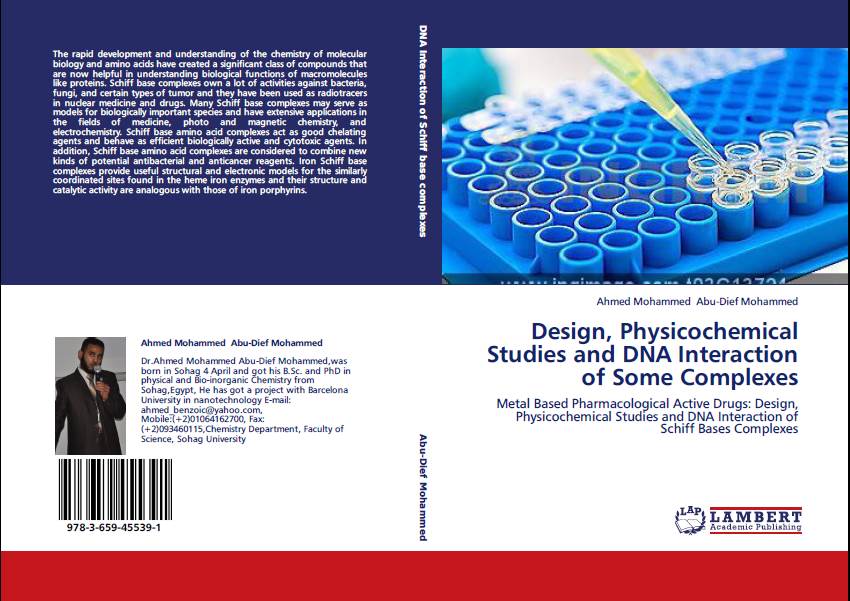In recent years, great interest has been focused on Fe(II) Schiff bases amino acids complexes as cytotoxic and antitumor drugs. Thus a series of new iron(II) complexes based on Schiff bases amino acids ligands have been designed and synthesized from condensation of 2-hydroxy-1-naphthaldehyde and 5-bromosalicylaldehyde (bs) with α-amino acids ((L-alanine (ala), L-phenylalanine (phala), L-aspartic acid (aspa), L-histidine (his) and L-arginine (arg)). Structure elucidation of the investigated iron(II) complexes were determined using elemental analyses, infrared, ultraviolet-visible, thermogravemetric analysis, as well as conductivity and magnetic susceptibility measurements. Moreover, the stoichiometry and the stability constants of the prepared complexes have been determined spectrophotometrically. The results suggest that 2-hydroxy-1-naphthaldehyde and 5-bromosalicylaldehyde amino acid Schiff bases behave as dibasic tridentate ONO ligands and coordinate to Fe(II) in octahedral geometry according to the general formula [Fe(HL)2].nH2O. But in case of 2-hydroxy-1-naphthaldehyde with L-histidine, the ligand acts as tetradentate ([FeL(H2O)2].2H2O), where HL = mono anion and L = dianion of the ligand. The conductivity values between 28–64 Ω−1 mol−1 cm2 in ethanol imply the presence of nonelectrolyte species. The pH profile revealed that, the wide range of pH stability of the investigated complexes is at pH = 4-10 in most of them. The complexes structures were validated using quantum mechanics calculations based on accurate DFT methods. The solubilities of investigated complexes in water-ethanol, water-propanol, water- acetone and water-DMSO mixtures were established and their transfer chemical potentials were calculated. It was observed that the hydrophobicity of the investigated complexes leads to stabilization of them with increasing solvent percent. The order of hydrophobicity according to the following sequence: nhi < bsasi < bsali < nasi < nali < bsari < nari < bshi < bsphali < nphali
In addition, the prepared complexes were tested for their toxicity on chick embryos and found to be safe until a concentration of 100 µg / egg with full embryos formation. Moreover, the prepared compounds are screened for their in-vitro antibacterial and antifungal activity. The results of these studies indicate that the metal complexes exhibit a stronger antibacterial and antifungul efficiency than their corresponding ligands. Furthermore, the interaction of the investigated complexes with (CT-DNA) was investigated by using spectromphotometry, viscosity, agarose gel electrophoresis measurements and kinetic studies. The experimental results indicated that the investigated complexes strongly bind with CT-DNA via intercalative mode and showed a different DNA binding activity according to the sequence: nhi > bsari > bshi > bsali > bsasi > nari > bsphali > nali > nasi > nphali.


